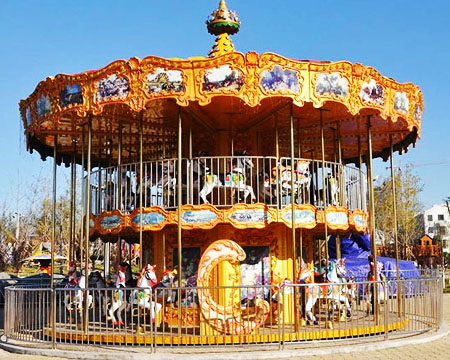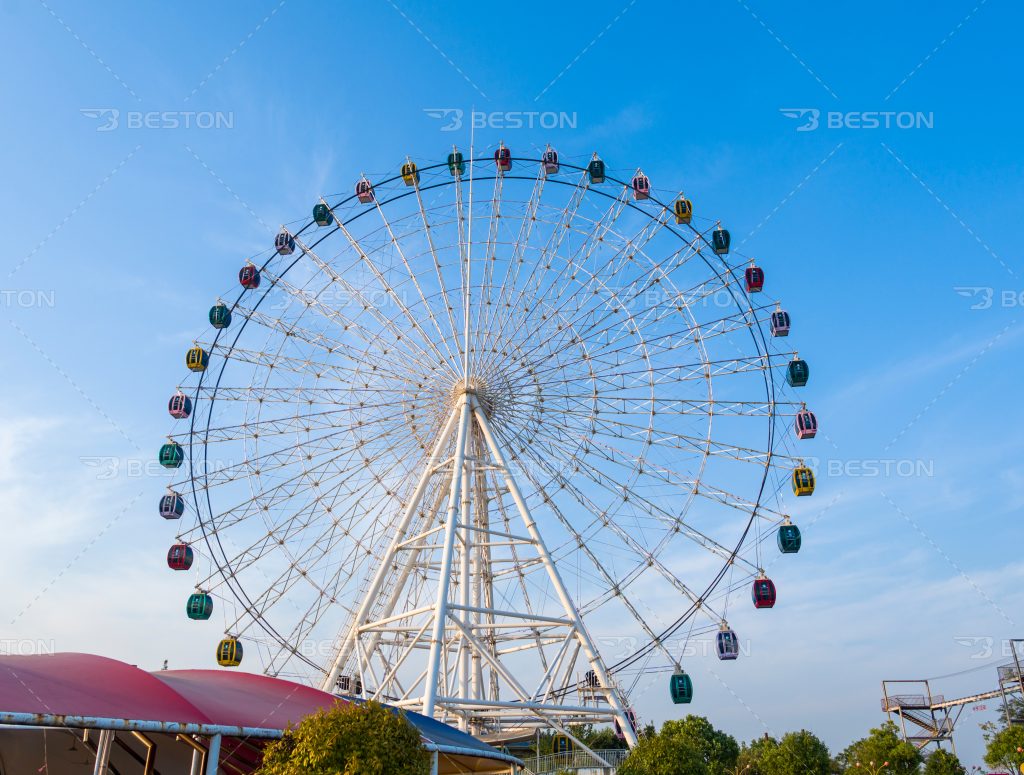Introduction
Sensory design has become a defining element of next-generation attraction engineering. As parks evolve beyond visual spectacle, creators increasingly rely on integrated sensory orchestration—touch, sight, and sound functioning as a single experiential system. This approach enhances emotional resonance, strengthens narrative immersion, and heightens operational value across diverse attractions, from indoor ride to large-scale mechanical landmarks such as a ferris wheel ride. When applied with precision, sensory synergy transforms a conventional installation into a memorable encounter that visitors internalize long after departure.
The Sensory Framework Behind Modern Attractions
A well-constructed sensory ecosystem is never incidental. It is engineered through an iterative process that considers behavioral psychology, environmental ergonomics, and mechanical performance. Whether developing an amusement park carousel, a motion-based indoor ride, or advanced amusement park ride for sale, designers manage sensory load carefully—balancing stimulation with clarity to avoid cognitive clutter.

Three pillars guide the system:
-
Tactile Feedback: Material selection, surface temperature, micro-vibration, and kinetic responsiveness.
-
Visual Architecture: Lighting, chromatic sequencing, depth perception, and spatial silhouette.
-
Acoustic Dynamics: Layered soundscapes, directional audio cues, and frequency modulation.
When these pillars interlock coherently, they create a multisensory continuum that increases guest satisfaction and enhances perceived value.
Touch: The Often-Overlooked Driver of Emotional Anchoring
Tactile experience is one of the most undervalued components in attraction engineering, yet it profoundly shapes how visitors interpret an environment. Touch determines whether an attraction feels premium, safe, comfortable, or outdated.
1. Materiality and Thermal Comfort
Contact surfaces—restraints, control handles, boarding platforms—communicate quality.
A ferris wheel ride, for instance, relies on cabin interiors that maintain optimal thermal neutrality, ensuring the surface does not become uncomfortably warm under solar load or cold during winter operation.

Textured patterns, micro-grip polymers, and wear-resistant laminates reinforce confidence. Subtle friction gradients guide body positioning naturally without explicit instructions.
2. Motion-Driven Tactile Cues
For indoor rides systems, tactile engagement is shaped by controlled vibration signatures.
Low-frequency resonance simulates mass and momentum, while high-frequency pulses provide a sense of responsiveness. A well-tuned motion platform mimics environmental phenomena—wind turbulence, uneven terrain, or mechanical rumble—without inducing discomfort.
3. Haptic Synchronization
Haptic cues align with visual and auditory triggers to create co-dependent sensations.
When the sensory timing is accurate, immersion intensifies.
When misaligned, it breaks instantly.
Therefore, synchronization systems require millisecond-level precision, especially in interactive or narrative-driven attractions.
Sight: The Primary Vector of Spatial Interpretation
Visual stimuli form the backbone of attraction design. They determine the visitor’s initial impression and mediate all other sensory channels.
1. Lighting as a Narrative Medium
Dynamic lighting defines spatial rhythm.
Continuous transitions—cool hues for ascent, warm tones for descent—help guide emotional pacing.
An amusement park carousel benefits greatly from perimeter illumination, reflective ornaments, and rhythmic sequencing that builds a subtle sense of motion even before the platform rotates.
For indoor ride environments, light is also a tool for perception control, masking mechanical boundaries to create deeper visual illusions.
2. Spatial Composition and Depth
Designers treat visual space as a layered construct.
Foreground elements anchor attention; background textures reinforce scale; motion graphics provide kinetic energy.
This multi-plane composition is especially critical for dark-ride layouts, which rely on optical depth to expand compact floor plans perceptually.
3. Color Psychology and Attention Guidance
Chromatic planning influences behavior:
-
Warm palettes attract and energize.
-
Cool palettes calm and stabilize.
-
High-contrast accents highlight operational touchpoints or safety interfaces.
In mechanical attractions such as a ferris wheel ride, color gradients also enhance skyline visibility, turning the ride into a branding beacon.
Sound: The Invisible Architecture of Atmosphere
While sight commands attention, sound controls emotion. Acoustic design often defines the difference between a passable experience and an exceptional one.
1. Layered Soundscapes
Sophisticated attractions employ three layers of audio:
-
Ambient bed: continuous environmental sound.
-
Directional cues: localized triggers guiding visitor attention.
-
Emotional score: music or tonal motifs enhancing narrative pace.
An amusement park ride for sale integrated with high-fidelity multi-zone audio can dramatically elevate its perceived complexity without altering its mechanical structure.
2. Frequency Engineering
Low frequencies create physicality; mid-frequencies shape clarity; high frequencies enhance detail.
Balancing these layers prevents auditory fatigue—particularly important for indoor ride systems where sound reverberation can easily overwhelm.
3. Spatial Audio and Positional Accuracy
Directional audio simulates spatial movement.
A sound source that shifts accurately across channels reinforces visual illusions such as passing vehicles, airborne creatures, or environmental transitions.
This technique is critical for motion-based dark rides, where auditory guidance helps orient passengers through complex narratives.
Multisensory Integration: Where Synergy Creates Immersion
True sensory immersion emerges only when touch, sight, and sound operate as a coherent unit. This requires meticulous calibration:
1. Temporal Alignment
Every stimulus must fire at the correct moment.
For example, a carousel horse rising should coincide with synchronized lighting glimmers and a subtle hydraulic hum.
A delay—only a fraction of a second—can disrupt perceived realism.
2. Cognitive Load Balancing
Too many simultaneous stimuli create confusion.
Too few diminish engagement.
Designers manage sensory density strategically, increasing intensity during narrative peaks and reducing clutter during transitions or loading cycles.
3. Environmental Continuity
Multisensory cues must remain consistent across materials, spaces, and moments.
A ferris wheel cabin that smells neutral, feels thermally balanced, and plays soft ambient audio supports relaxation—even while the panoramic visual field shifts dramatically.
Application in Modern Ride Taxonomy
Different ride types leverage sensory coordination in distinct ways:
Indoor Ride
Relies heavily on choreographed sensation layering. Since external stimuli are controlled, indoor environments enable precise sensory manipulation—ideal for storytelling or simulation-based attractions.
Amusement Park Carousel
Uses rhythmic movement, ornamental lighting, and melodic scoring to create a nostalgic atmosphere. Tactile stability and gentle motion are essential for family-friendly accessibility.
Ferris Wheel Ride
Emphasizes panoramic visibility. Visual design dominates, but tactile comfort and acoustic subtleties (soft music, wind-noise mitigation) are essential for guest relaxation.
Amusement Park Ride for Sale
Manufacturers increasingly integrate multisensory modules—LED packages, directional audio, ergonomic seating, vibration generators—to increase competitive differentiation.
Conclusion
A modern attraction is no longer a purely mechanical device. It is a multisensory ecosystem shaped by the interplay of touch, sight, and sound. When synchronized, these elements elevate familiar installations—an indoor ride, a ferris wheel ride, or even a traditional amusement park carousel—into emotionally resonant experiences.
Sensory engineering will continue to define the future of themed entertainment. As technology advances, the convergence of tactile precision, visual intelligence, and acoustic sophistication will expand the creative frontier—transforming every amusement park ride for sale into a vessel for deeper, more compelling human engagement.
